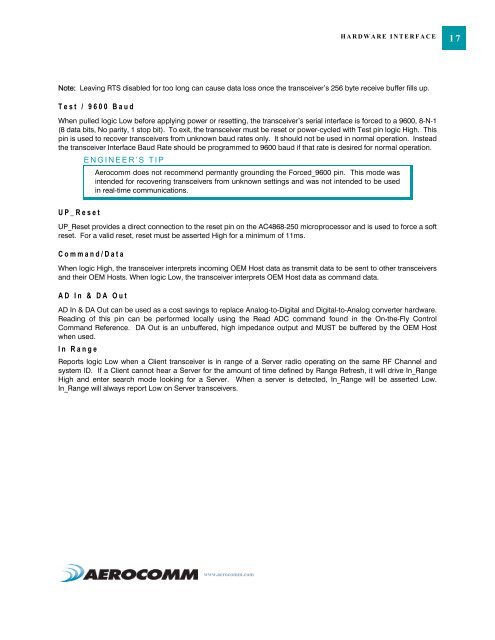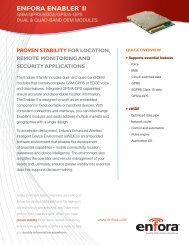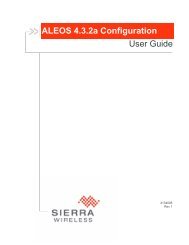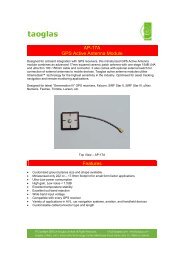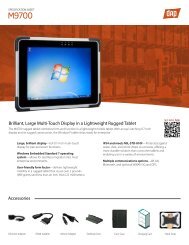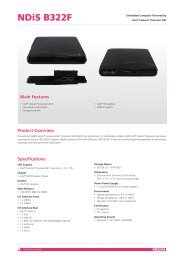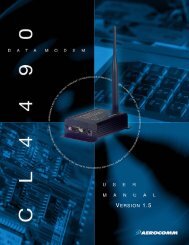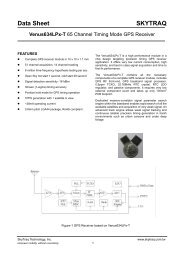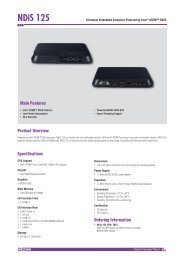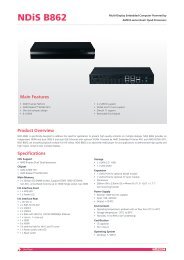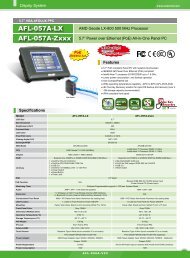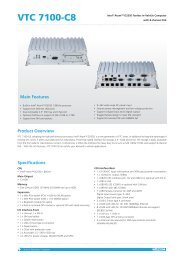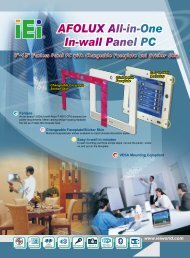Aerocomm AC4868.pdf - HEAnet Mirror Service
Aerocomm AC4868.pdf - HEAnet Mirror Service
Aerocomm AC4868.pdf - HEAnet Mirror Service
Create successful ePaper yourself
Turn your PDF publications into a flip-book with our unique Google optimized e-Paper software.
www.aerocomm.com<br />
HARDWARE INTERFACE<br />
Note: Leaving RTS disabled for too long can cause data loss once the transceiver’s 256 byte receive buffer fills up.<br />
Test / 9600 Baud<br />
When pulled logic Low before applying power or resetting, the transceiver’s serial interface is forced to a 9600, 8-N-1<br />
(8 data bits, No parity, 1 stop bit). To exit, the transceiver must be reset or power-cycled with Test pin logic High. This<br />
pin is used to recover transceivers from unknown baud rates only. It should not be used in normal operation. Instead<br />
the transceiver Interface Baud Rate should be programmed to 9600 baud if that rate is desired for normal operation.<br />
ENGINEER’S TIP<br />
<strong>Aerocomm</strong> does not recommend permantly grounding the Forced_9600 pin. This mode was<br />
intended for recovering transceivers from unknown settings and was not intended to be used<br />
in real-time communications.<br />
UP_Reset<br />
UP_Reset provides a direct connection to the reset pin on the AC4868-250 microprocessor and is used to force a soft<br />
reset. For a valid reset, reset must be asserted High for a minimum of 11ms.<br />
Command/Data<br />
When logic High, the transceiver interprets incoming OEM Host data as transmit data to be sent to other transceivers<br />
and their OEM Hosts. When logic Low, the transceiver interprets OEM Host data as command data.<br />
AD In & DA Out<br />
AD In & DA Out can be used as a cost savings to replace Analog-to-Digital and Digital-to-Analog converter hardware.<br />
Reading of this pin can be performed locally using the Read ADC command found in the On-the-Fly Control<br />
Command Reference. DA Out is an unbuffered, high impedance output and MUST be buffered by the OEM Host<br />
when used.<br />
In Range<br />
Reports logic Low when a Client transceiver is in range of a Server radio operating on the same RF Channel and<br />
system ID. If a Client cannot hear a Server for the amount of time defined by Range Refresh, it will drive In_Range<br />
High and enter search mode looking for a Server. When a server is detected, In_Range will be asserted Low.<br />
In_Range will always report Low on Server transceivers.<br />
17


